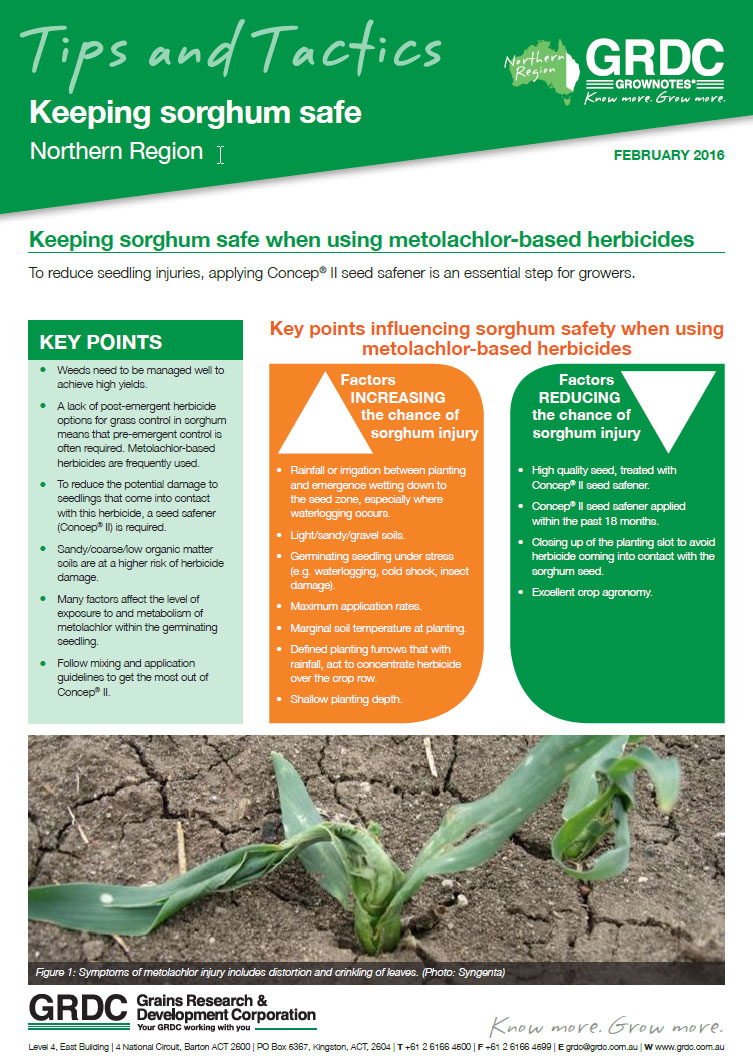Keeping sorghum safe
Keeping sorghum safe
Published: 7 Apr 2016

Weed competition during the establishment phase of sorghum can result in poor establishment, uneven maturity and harvest delays. Where weeds compete with the crop for nutrients and moisture, a yield penalty often occurs.
Key points
- Weeds need to be managed well to achieve high yields.
- A lack of post-emergent herbicide options for grass control in sorghum means that pre-emergent control is often required. Metolachlor-based herbicides are frequently used.
- To reduce the potential damage to seedlings that come into contact with this herbicide, a seed safener (Concep® II) is required.
- Sandy/coarse/low organic matter soils are at a higher risk of herbicide damage.
- Many factors affect the level of exposure to and metabolism of metolachlor within the germinating seedling.
- Following mixing and application guidelines to get the most out of Concep® II
Key points influencing sorghum safety when using metolachlor-based herbicides
Factors increasing the chance of sorghum injury
- Rainfall or irrigation between planting and emergence wetting down to the seed zone, especially where waterlogging occurs.
- Light/sandy/gravel soils
- Germinating seedling under stress (e.g. waterlogging, cold shock, insect damage).
- Maximum application rates.
- Marginal soil temperature at planting.
- Defined planting furrows that with rainfall, act to concentrate herbicide over the crop row.
- Shallow planting depth.
Factors reducing the chance of sorghum injury
- High quality seed, treated with Concep® II seed safener.
- Concep® II seed safener applied within the past 18 months.
- Closing up of the planting slot to avoid herbicide coming into contact with the sorghum seed.
- Excellent crop agronomy.
To keep upto date with this publication use the following link www.grdc.com.au/TT-KeepingSorghumSafe
Region North
Region: North
GRDC Project Code: ICN1307-001RTX,
